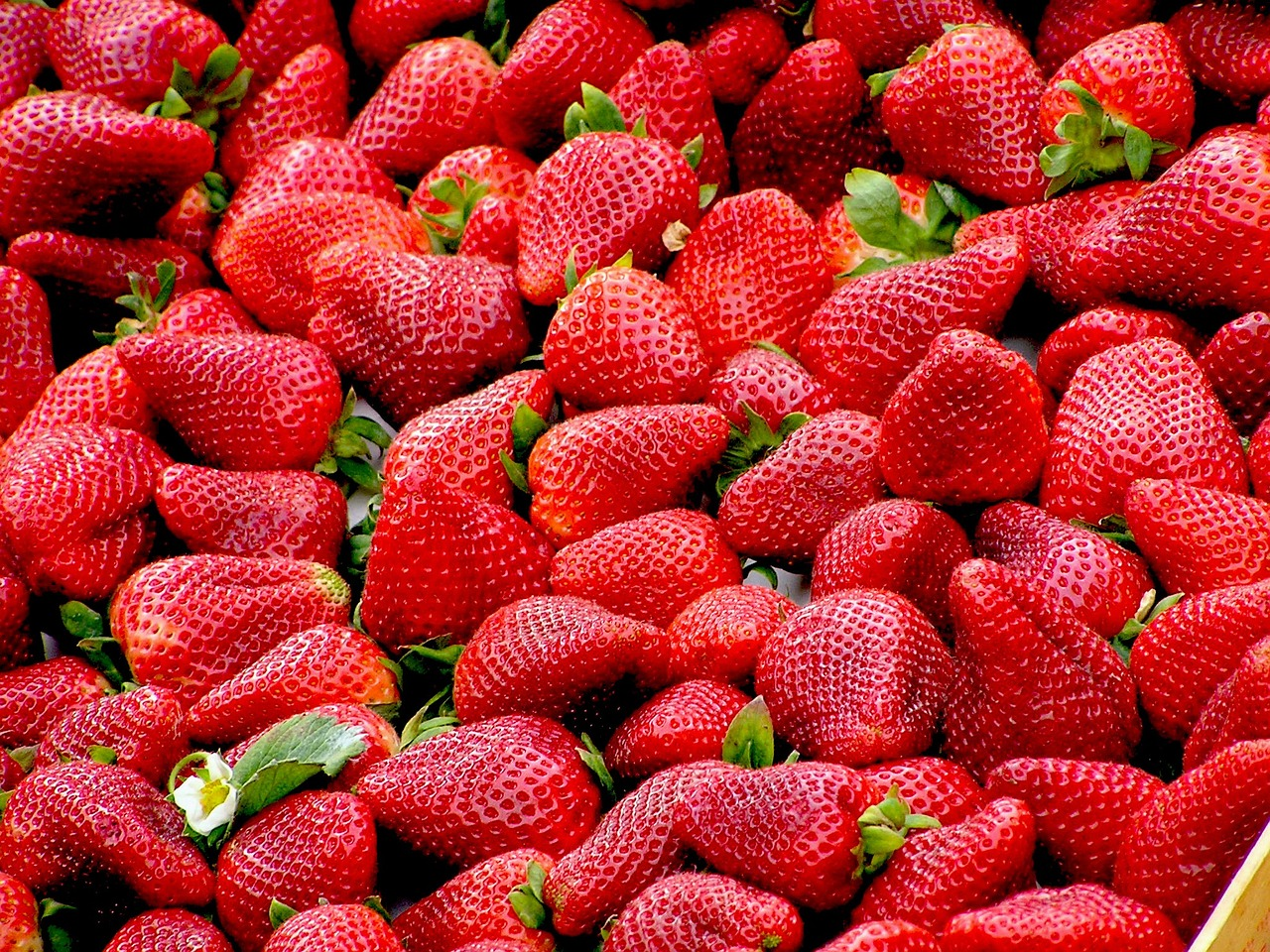
Fertilizing, Pruning & Overwintering Strawberries: Tips for Care
We give you helpful tips on how to care for strawberries for a rich harvest. Although strawberry plants are quite robust, there are a few things to consider when fertilizing, pruning and overwintering. There are also other care measures such as mulching and watering, for which there are also a few things to know. Last but not least, you will find an overview of common diseases in strawberry beds to help you recognize them.
This Article Contains:
- The Right Location & Soil
- How to Water Strawberries
- Fertilizing Strawberries: Here’s How to Do It
- Pruning Strawberries: Should I Cut Strawberries Back in Winter?
- Propagating Strawberries: How to Make Your Own Cuttings
- Mulching Strawberries
- Overwintering Strawberries
- Strawberry Diseases at a Glance
- Frequently Asked Questions About Strawberry Care
Quick Overview
Caring for Strawberries: Fertilizing, Pruning, Propagating, Overwintering
- Fertilize strawberries: Fertilize with organic berry fertilizer, as strawberries are sensitive to over-fertilization with nitrogen
- Prune strawberries: Regularly remove runners and diseased plant parts, after the harvest you can cut back your strawberry plant more generously
- Propagate strawberries: After three years, strawberries should be replaced, for this you can make your own offshoots from runners
- Watering strawberries: A regular water supply is important, so water from below twice a day in the morning and evening during dry periods
- Mulch strawberries: Mulch regularly with straw, grass clippings, bark mulch or sheep's wool to protect the strawberries
- Overwintering strawberries: Remove diseased plant parts, apply a 10 to 15 cm thick layer of mulch and water occasionally during dry winters
The Right Location & Soil
Strawberries are perennial, hardy plants that can be found in many hobby gardens in our latitudes. With the right care, you can harvest and enjoy many of your own strawberries. Although strawberry plants are quite robust, there are a few things you need to know in order to have healthy plants. The most important basis for good growth is a suitable location and soil. You can find out what you need to consider here below.
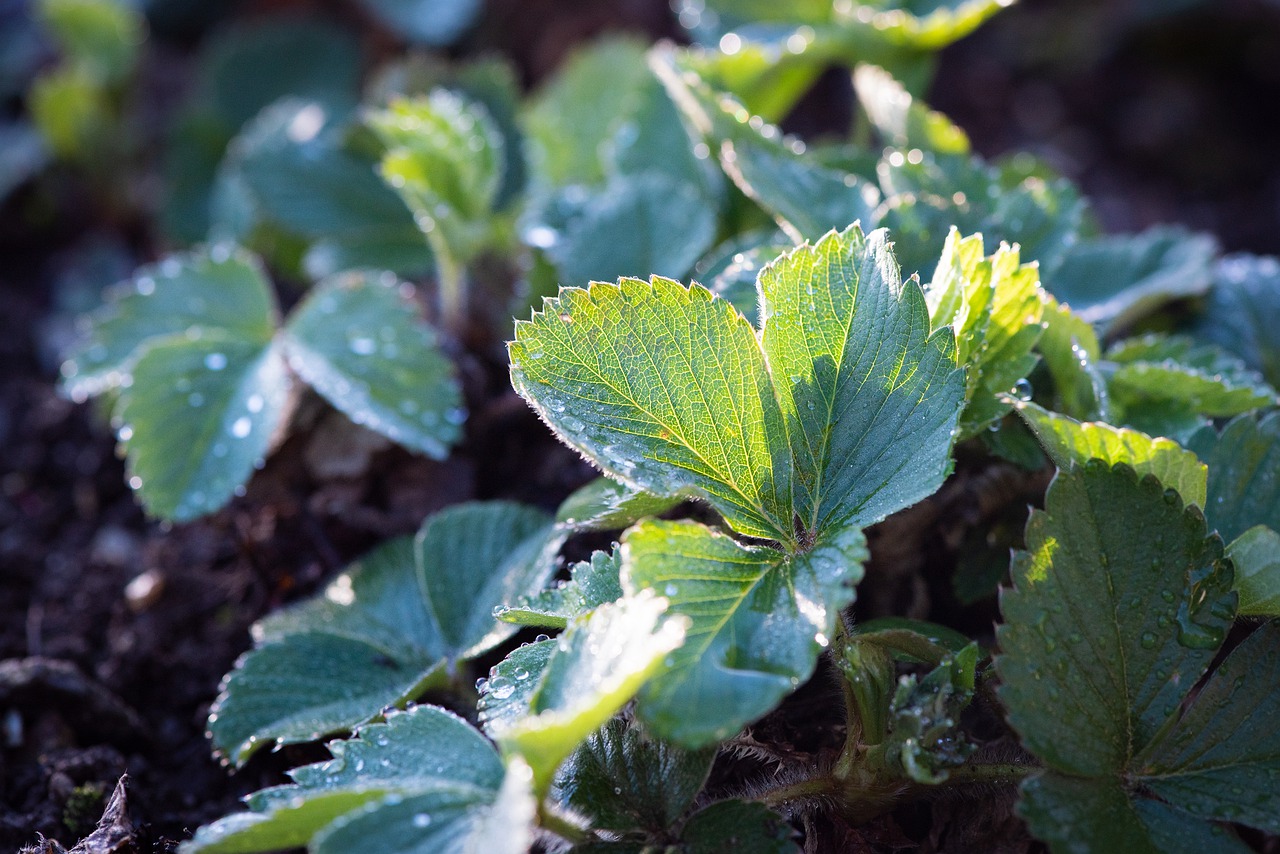
The Right Location
The be-all and end-all for healthy plants is to respond to their needs in terms of location and soil. Otherwise they will not grow robust and strong and are inherently more susceptible to disease. An important point for healthy strawberry plants is therefore the right location. However, this depends a little on the strawberry variety you are planting. There are varieties that prefer full sun and do not produce such aromatic fruit in partial shade. On the other hand, there are also varieties that like to grow in partial shade. The requirements of each variety can be found on the seed packet. You can find an Overview of Strawberry Varieties in this article. In general, however, the location should be sunny to semi-shady, with slightly sandy, well-drained soil. Strawberries do not like waterlogging at all, but need an even supply of water in order to produce fruit.
The Right Soil for Strawberries
Strawberries differ in their soil requirements from other crops that you may grow in your garden. However, the choice of soil is very important for healthy strawberry plants, as many diseases are soil-borne and are promoted if your strawberry plants are in the wrong soil. Strawberries prefer well-drained, light but humus-rich soil with a slightly acidic pH value. Depending on the variety, the pH value should be between 5.5 and 7. Strawberries usually do not thrive so well in heavy soil, as the risk of waterlogging is quite high here. Strawberry plants do not cope well with waterlogging and become susceptible to disease (especially root rot). If you have heavy soil, you can improve your garden soil with certain soil improvement measures. You can find out How to Improve Your Soil in this article.
If you want to grow strawberries in a pot, we advise against using conventional potting soil, as the pH value is usually not right. Instead, switch to special berry soil, which usually has a suitable nutrient profile for berries. It contains relatively high levels of potassium and phosphorus, but not quite as much nitrogen. Alternatively, you can also use sowing soil and mix it with leaf compost. Do not use conventional compost, as this usually contains too many nutrient salts, which strawberries do not like.
How to Water Strawberries
Strawberries have fairly shallow roots and like to grow in slightly sandy soil, which usually does not have such a high water retention capacity. This is an advantage as waterlogging is less likely to occur. However, regular watering is very important, especially during hot periods and during flowering and fruiting. Depending on the weather, it may therefore be necessary to water twice a day in the morning and evening. The nutrient supply to the plants suffers under drought stress. It is therefore particularly important to ensure a good water supply after fertilizer applications. Strawberries are particularly susceptible to soil-borne fungal diseases, which can reach the leaves through splashing water. Therefore, water from below and try to keep the leaves dry. You should never water your strawberry plants from above into the heart of the plant. For this reason, a drip hose is recommended for strawberry plants, as there is no risk of splashing water from watering. You can find more Tips on Watering Plants and saving water when watering here in this article.
Fertilizing Strawberries: Here’s How to Do It
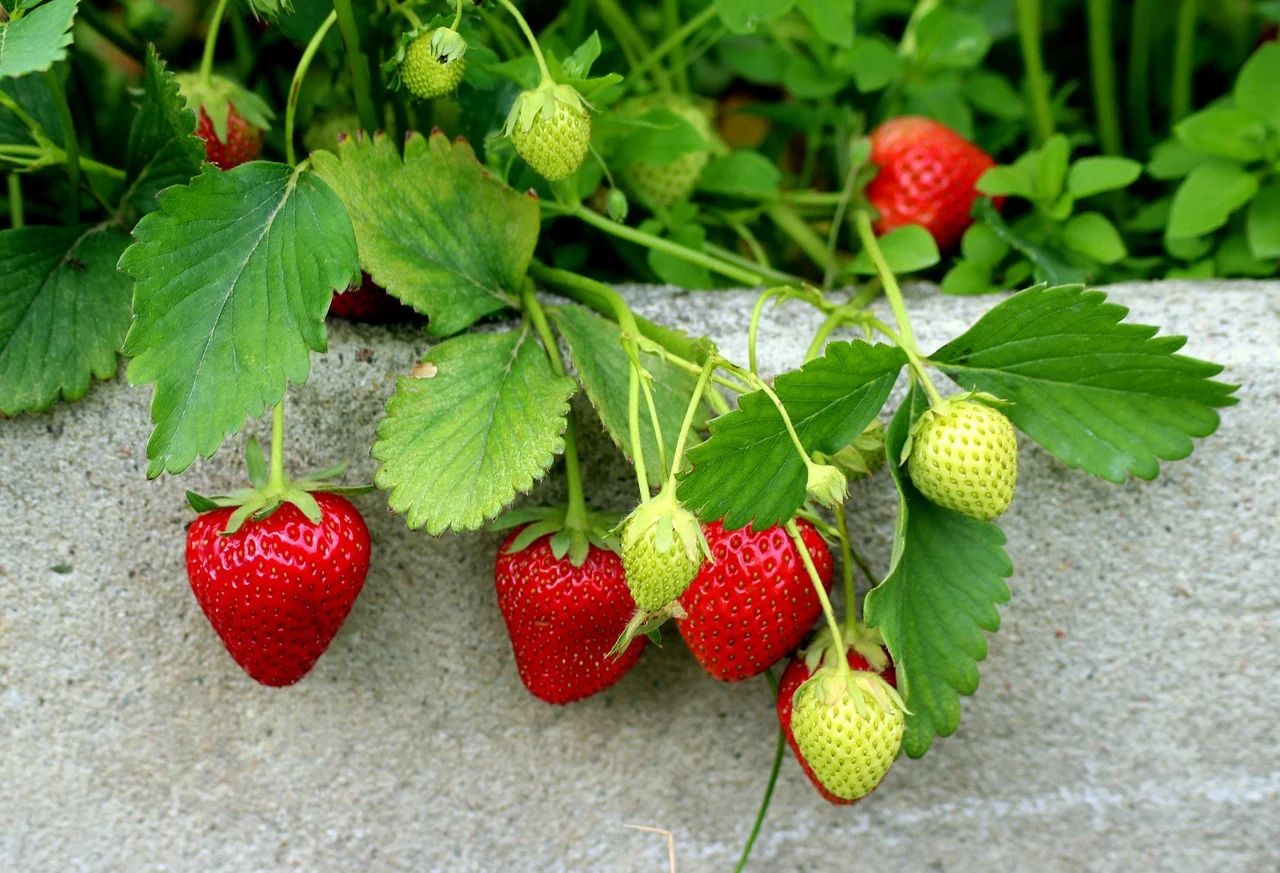
Strawberries need certain nutrients in order to grow healthily. As with most plants, the main nutrients nitrogen, phosphorus and potassium play a role here. In contrast to most vegetable plants, however, strawberries do not need quite as much nitrogen, but rather more potassium. Potassium is an important nutrient that promotes fruit formation and the quality of the fruit. This is why berry fertilizers usually contain more potassium than nitrogen. It is important to know that strawberries are very sensitive to over-fertilization. Especially with an excess of nitrogen, your strawberry plants will be more susceptible to disease! In addition, nitrogen promotes leaf growth and too much nitrogen results in a lush rosette of leaves, but at the expense of flower formation.
Special tomato and berry fertilizers are very suitable for covering nutrient requirements. You will also find the exact dosage on the packaging. Alternatively, there are various household remedies and organic slow-release fertilizers that you can also use to fertilize strawberries. Compost, manure, plant manure, coffee grounds and the like are also good options. However, you should find out which nutrients dominate in these fertilizers. You can read more about Fertilizing Strawberries Correctly with the right time and organic fertilizers in this article.

Learn More About Strawberry Plants!
In our library you will find information on the individual varieties with cultivation periods, tips on planting and harvesting. You will also find good and bad companion plants to help you plan a mixed crop.
View Library HerePruning Strawberries: Should I Cut Strawberries Back in Winter?
Strawberries spread quickly via runners and are therefore an efficient ground cover. To improve growth and promote fruit formation, regularly cut off any runners that are not needed. The strawberry plant loses a lot of energy through the runners, which it could otherwise put into fruit development. Therefore, remove some of the runners during flowering and fruiting. However, leave some on the plant so that you can make offshoots later. You can leave these to root and grow them as cuttings for the following year. You can find out how to make your own offshoots in the following section.
In the fall after the harvest, cut back your strawberry plants to prepare them for winter. This involves removing all old shoots and leaves. Make sure to cut off all diseased parts of the plant. This will allow them to sprout healthily again next season and prevent these diseases from spreading in the bed. It is also advisable to remove diseased parts of the plant during the season. When pruning, make sure you use a sharp, clean knife and cut the plant parts close to the ground. You should never damage the heart of the plant, otherwise it will die.
Propagating Strawberries: How to Make Your Own Cuttings
Almost all types of strawberry reproduce via above-ground runners that creep over and cover the ground. The mother plant forms so-called sprouts for propagation. You can plant and grow these offspring, as a mother plant should be replaced after the second or third year of harvest. In order to have healthy offshoots later on, you should only propagate healthy plants. You can also pay attention to which plant's fruits taste particularly good.
Only cut the offshoots from the mother plant when they have already formed their own roots and are able to provide themselves with nutrients as far as possible. Otherwise, the small offshoots will be shocked when they are separated from their mother and may die. You can then plant these cuttings in suitable soil and place them in a sunny spot over the winter. Here the plant can now grow and become large. The following year, you can plant them out either in spring or fall. If you would like to read more about Planting and Picking Strawberries, you can find an overview of cultivation here in the article.
Mulching Strawberries
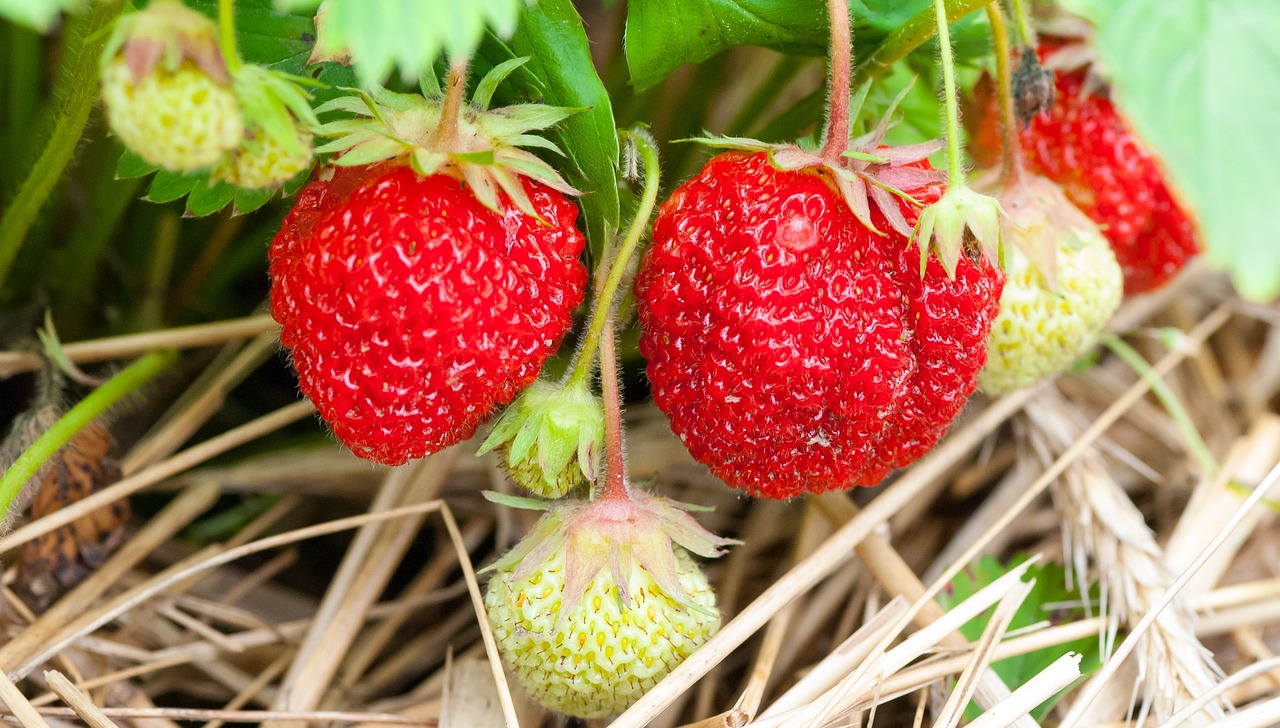
Another important point in the care of strawberries is Mulching. Mulch has many advantages in the garden: firstly, it suppresses unwanted weeds, which is a great advantage for strawberries that are weak in competition. It also saves you work and time, because otherwise you have to weed. On the other hand, a layer of mulch retains moisture in the soil, which saves water and contributes to a more regular water supply. In addition to these benefits, your strawberry fruits will lie on a dry surface, protecting them from rot and dirt. There is also less splashing water from watering or rain, which contributes to better plant health. This protects the plants from numerous fungal diseases such as gray mold, which would otherwise be spread to the plants by the splashing water. Straw, bark mulch, grass clippings or sheep's wool are suitable mulch materials for strawberries.
Overwintering Strawberries
Strawberries are hardy plants that can overwinter in the bed without any problems in our latitudes. As mentioned above, the first step is to prune your plants after harvesting, mainly to remove diseased plant parts. Before your strawberry bed goes into winter, you should check all plants again for diseases and, if necessary, remove (parts of) plants so that all plants can start the new year in good health.
Although strawberry plants can withstand frost well, you should mulch the soil well again before winter. Apply a thicker layer of mulch than in summer, about 10 to 15 cm/3.9 to 5.9 in thick. This will keep the moisture in the soil and your plants warm. However, make sure not to cover the plants completely. Although the plants need less water in winter, you should still water them from time to time, especially in dry winters without rain or snow. Otherwise the plants could dry out.
If you grow strawberries in pots, you should place the potted plants in a protected, frost-free place over the winter, for example in a greenhouse or in a cool place in the house. The roots are more exposed to frost in a pot and suffer frost damage more quickly.
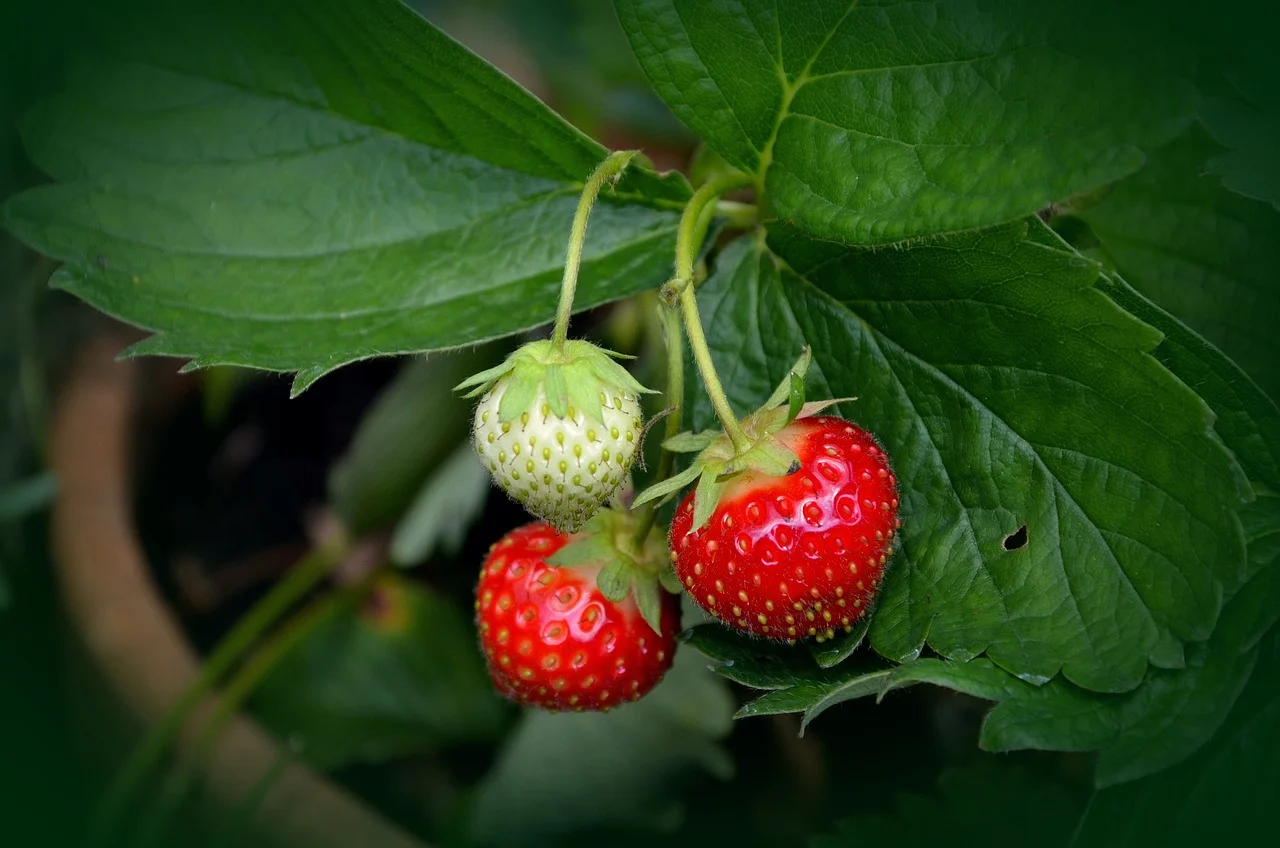
Strawberry Diseases at a Glance
Strawberries are a beginner-friendly crop. If you pay attention to the key points, you won't have many problems. These include choosing robust varieties and regular care measures, as described above. It is also important to change the location of the strawberry plants after three years, as many pests are soil-borne. Mixed Cultivation With Strawberries can also be helpful in preventing and keeping away diseases and pests. Below you can see which diseases are frequently observed in strawberry plants:
Gray Mold (Botrytis Cinerea)
The most common disease is probably gray mold (Botrytis cinerea): strawberry plants are usually infected during flowering. As a result, brown spots develop on the unripe fruit, which are later covered with the typical mold coating. All infected fruit must be removed and the plant treated with a garlic decoction or Nettle Slurry. As the fungus can overwinter on the plant remains, you should definitely remove all infected plant parts again in the fall so that the plant can sprout healthily again next year.
Rhizome Blight and Leatherberry Blight (Phytophthora Cactorum)
These two diseases are caused by unfavorable site conditions and therefore tend to occur together. If your strawberry plants get wet feet due to compacted soil, they are prone to rhizome rot. This is why this disease usually appears quite quickly after planting. The plants give a clear signal that the location is not suitable. The leaves first turn brown, then the affected parts of the plant wilt and finally die. Usually, the wilt is first observed in the heart and then spreads to the outer leaves. The roots also rot, so you can see reddish-brown to brown rotting spots.
You can recognize leatherberry rot by brown discolored fruits that eventually dry out. It usually affects the unripe fruit, which unfortunately becomes inedible and bitter. Both diseases are soil-borne, which is why a well-planned crop rotation and succession cropping can help prevent them.
Red and Black Root Rot (Phytophthora Frageriae)
Red root rot is caused by a fungus that can develop particularly well in compacted soil. When infected, leaf and fruit growth is reduced and the leaves grow compressed with a blue-green discoloration. The plants also develop fewer runners. In addition, the roots often begin to rot, with the lateral roots being affected first and then the main roots.
Black root rot can be caused by various pathogens: Fungi, nematodes but also by abiotic factors such as compacted soil, a tight crop rotation or frost damage. Here too, the roots rot, causing the plants to lose stability and simply pull themselves out of the soil. You can easily recognize this disease by the fact that the roots rot, but the inside of the roots remains white for a long time.
Strawberry Powdery Mildew (Spaerotheca Macularis)
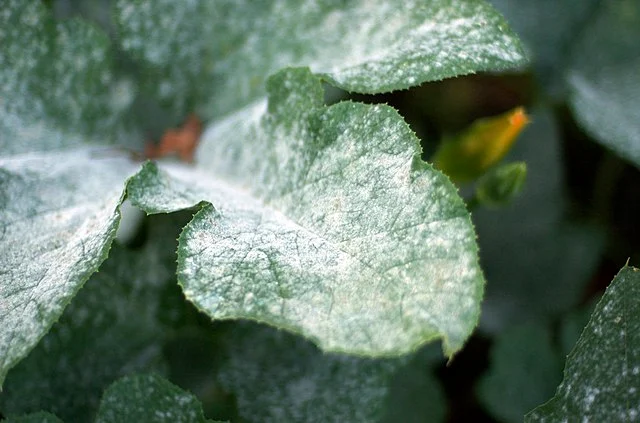
Powdery mildew (Oidium) normally forms a white coating on the leaf surfaces and the fruit begins to rot. This coating is normally considered a characteristic symptom, but may be absent on strawberries. Instead, red discoloration appears on the undersides of the leaves and the leaves curl up. The cause is often insufficient aeration combined with high humidity and warm temperatures above 24 ° C/75 ° F. Remove infested plant parts immediately. A tried and tested household remedy against mildew is baking soda mixed with water, as fungi do not like an alkaline environment.
White Spot and Red Spot Disease
White and red spot disease (Diplocarpon earliana, Mycosphaerella fragariae) is also a fungal disease that causes brown-red spots with or without a white center on the leaves. Here too, infected parts of the plant are removed and the rest of the plant treated with nettle slurry.
Strawberry Wilt (Verticillium Dahliae)
Strawberry wilt (Verticillium dahliae) is a soil-borne fungus that causes yellowing or even complete wilting of all parts of the plant. Dispose of the affected plants immediately. To improve the soil, you can now sow cruciferous plants in the affected areas and later work their remains into the soil.
If you have any questions or comments, please write to us at [email protected]. Would you like to receive helpful gardening tips all year round and plan your own beds optimally? Then register here or download the Fryd app for Android or iOS download.
Fryd - your digital bed planner
Cover picture by robertobarresi on Pixabay.

Marie
Marie is an agronomist. She is particularly interested in the sustainable and organic cultivation of vegetables and other plants. In her own garden, she gained experience and likes to try things out to learn from nature. She is particularly interested in the values and principles of permaculture, in order to contribute not only to the well-being of nature, but also to the well-being of people and future generations.
Learn MoreCurrent Topics in the Community

We had an olive tree ... when it didn't survive a harsh winter, my husband and our children turned it into this sculpture - a real #heart element in our garden. We planted a rambler rose on the second olive tree, which enchants us every year with its white flowers. It looks as if it were a flowering rose bush ....

Liked 5 times
May I introduce: my roommates Max (left) and Moritz. Max is a "sweet starter", which I used for the panettone and I can say it's much better than the store-bought one! The baguette (ok I still have to work on the perfect shape 🤣) with yeast only. The Moritz is a rye sourdough and is used for Vintschgauer.

Hello lovelies I am new to gardening What recommendations do you have for buying seeds? Or which stores can you recommend? I'm planning to start with the classics Onions, potatoes, garlic, carrots, herbs, lettuce, tomatoes, peas, beet and pumpkin
Show 3 answersPopular Articles

Overwintering Parsley: How to Do It Successfully

How to Grow Lettuce in Winter: Varieties, Sowing, Harvesting

Growing Sage Plant: Tips for Sowing and Harvesting

What Herbs Can Be Planted Together?

Create & Design a Permaculture Garden

Overwintering Plants: Tubs, Pots and Raised Beds

Pruning, Fertilizing & Propagating Currants: Care Tips

Pruning Raspberries: How to Do It

Vegetable Garden With Greenhouse: How to Use Greenhouse Effect

Winterizing Beds and the Garden: How to Do It
FAQ
How often to water strawberries?
Strawberries need an even supply of water for healthy fruit. You should therefore water them twice a day from below during dry periods so that the leaves don't get wet. It is best to water in the morning and evening when the sun has already gone.
Which fertilizer for strawberries?
As organic fertilizers usually contain a lot of nitrogen or nutrient salts and strawberry plants react sensitively to them, we recommend watering with special berry fertilizers. These fertilizers have a suitable nutrient profile with more potassium and phosphorus for good fruit development.
Strawberries prefer to grow in slightly sandy, well-drained soil with a pH value between 5.5 and 7. Strawberry plants are more susceptible to disease in heavy soils that are prone to compaction and waterlogging. Normal potting soil is usually not so suitable.
How to overwinter strawberries?
Strawberries are hardy. To overwinter, cut back your strawberry plants and remove old, diseased leaves and shoots. Apply a thick layer of mulch for frost protection and make sure to water moderately from time to time in dry winters.